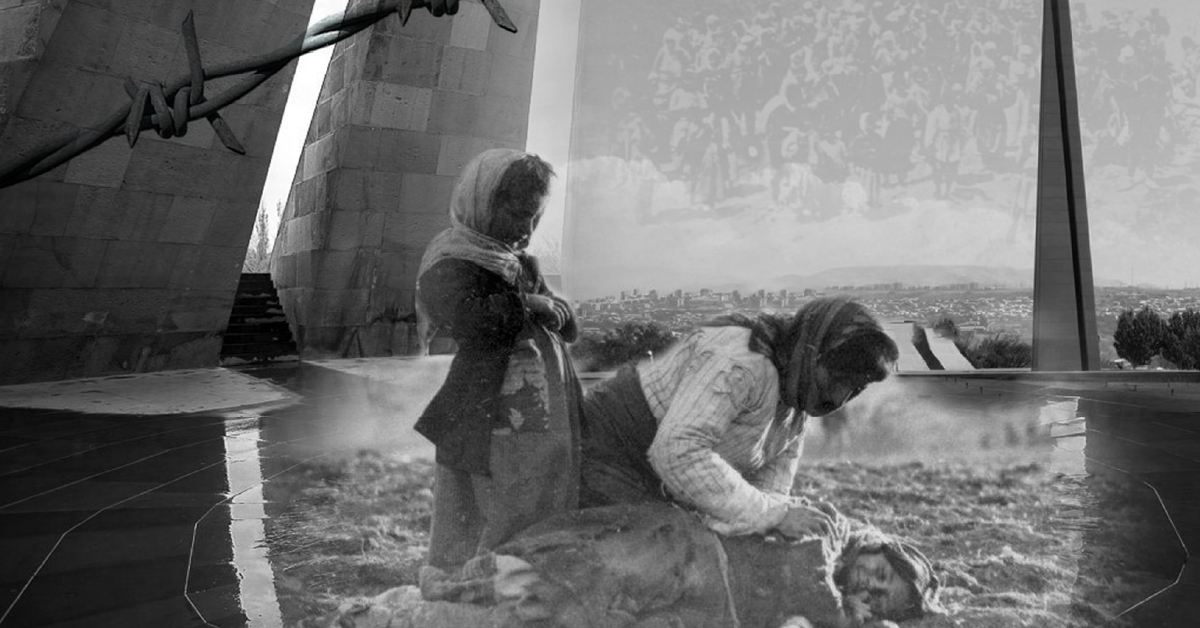2025
2025
2025-04-24

Today marks the 110th anniversary of the Armenian Genocide.
Starting from the 1890s, the Ottoman Empire adopted a state policy of extermination of Western Armenians, which was initiated by Sultan Abdul Hamid II and later continued by the Young Turks and Kemalists. During 1894-1922, Western Armenians were exterminated, and Armenian historical and cultural heritage was destroyed. One of the oldest indigenous peoples of Western Asia was deprived of the right to live in their homeland.
The policy of genocide initiated by the Hamid regime (1894-1896) was followed by another, more prominent example - the massacres of the Armenian population of Cilicia in April 1909, organized by the Young Turks. Although the latter came to power with the slogans of “liberty, equality, and fraternity,” in reality, they were guided by expansionist ideas of Pan-Turkism. During World War I (1914-1918), the Young Turk leadership continued the policy of exterminating Armenians on an even larger scale. During the genocide, the Turkish state also seized vast amounts of Armenian property.
Despite all this, as early as May 11, 1915, the Allied Powers (Great Britain, France, and Russia) issued a joint declaration condemning the mass killings of the Armenian population in the Ottoman Empire. Moreover, the first steps toward recognizing this crime and punishing its organizers were taken immediately after the end of World War I by the new Turkish government that had replaced the Young Turks.
In January 1919, military tribunals launched investigations into the Young Turk government, the leadership of the “Teşkilat-ı Mahsusa” (Special Organization), and members of the Committee of Union and Progress. On July 5, 1919, a verdict was issued sentencing 4 of the 31 accused criminals to death in absentia. These included Mehmed Talaat Pasha, the main architect of the Armenian Genocide, Minister of the Interior, head of the Central Committee of the Young Turk party, and Grand Vizier, along with War Minister Ismail Enver, Naval Minister and commander of the Ottoman 4th Army in Syria during World War I Ahmed Cemal Pasha, and Dr. Nazım, a member of both the party's Central Committee and the Special Organization.
Most of the remaining 27 defendants were sentenced to imprisonment, and some were exiled. However, many of them later returned from exile and even held high-ranking positions in the newly established Republic of Turkey. The Kemalists who succeeded the Young Turks did not condemn their predecessors and continued the same policy between 1920 and 1922 in Cilicia, the territories seized from the First Republic of Armenia, Smyrna, and elsewhere.
In 1943, at the request of the Turkish government, Talaat was exhumed and reburied with a state funeral at the Monument of Liberty in Istanbul, honored as a national hero. A mausoleum for Enver was built in the central Şişli district of Istanbul. In Turkey and other countries, mosques, schools, residential buildings, and streets were named after them.
Later, this policy was also adopted by the Azerbaijani state, established in Eastern Transcaucasia with the assistance of the Ottoman army. During the rule of Musavatist Azerbaijan (1918–1920), with the support of the Young Turks, the massacre of the Armenian population of Baku was carried out. This genocidal policy was implemented in other settlements in Eastern Transcaucasia, including Artsakh, Nakhijevan, and beyond.
Although during the Soviet era the Azerbaijani authorities could not openly continue this policy, they took advantage of the chaotic situation in the final years of the USSR and, between 1988 and 1991, resumed their anti-Armenian campaign, carrying out massacres in Sumgait, Baku, and Kirovabad.
The impunity for the crimes committed by the newly independent Republic of Azerbaijan, the absence of a proper political and legal assessment, created fertile ground for the deepening of a state-sponsored atmosphere of hatred toward Armenians in Azerbaijan. The country carried out acts of genocide against Artsakh in April 2016 and from September to November 2020. As a result of the Azerbaijani authorities’ consistent policy of ethnic cleansing against Armenians, the Republic of Artsakh was completely depopulated in September 2023.
Just as in present-day Turkey, in Azerbaijan as well, those who have shown particular brutality toward Armenians continue to be glorified. For instance, Shahin Talib oglu Tagiyev, commander of the Azerbaijani Armed Forces' "Gurtulush" battalion, Ramil Safarov, and others were awarded the title of national hero of Azerbaijan. Public squares and streets were named after executioners and perpetrators of atrocities.
Unfortunately, the horrific crimes committed by various Turkish regimes were not only unacknowledged and uncondemned by the current Turkish government, but they also inspired and encouraged new atrocities by the "brotherly" Azerbaijani authorities. For them, the perpetrators of the Armenian genocide, such as Abdul Hamid, Talaat, Enver, and others, became glorified figures.
We honor the memory of the innocent victims of the Armenian Genocide...